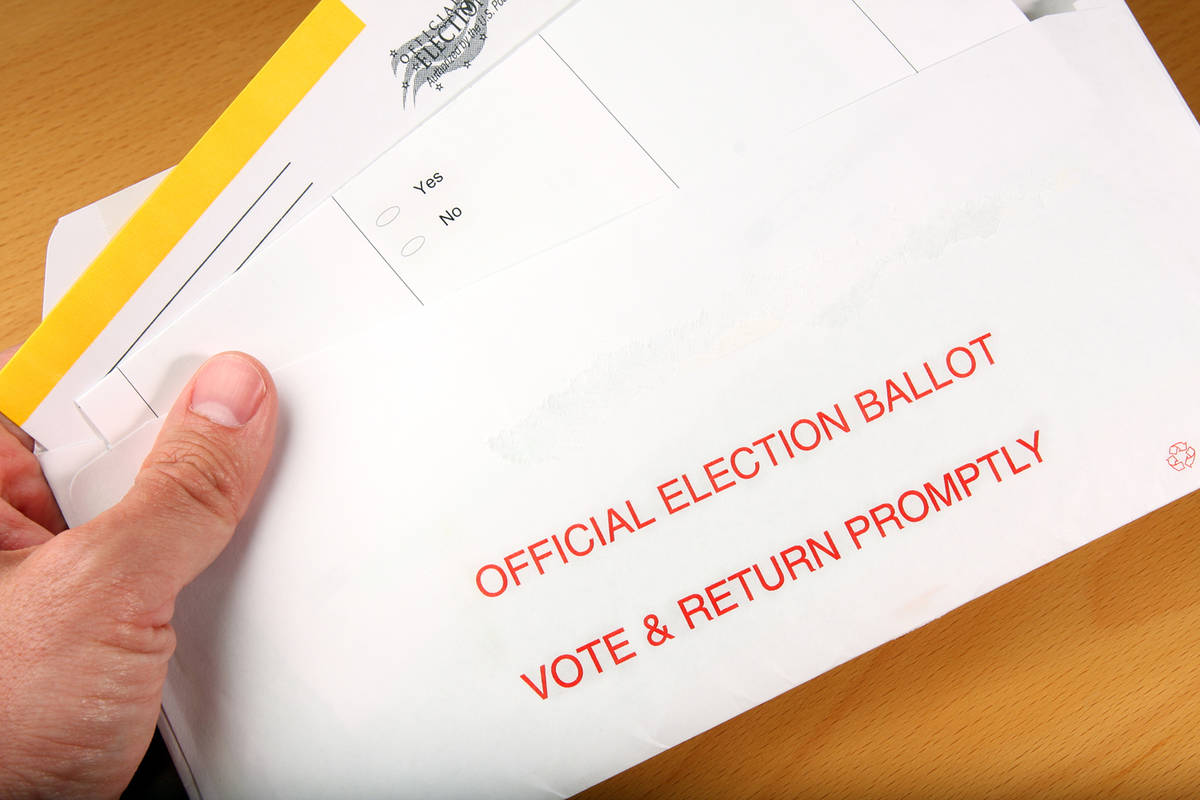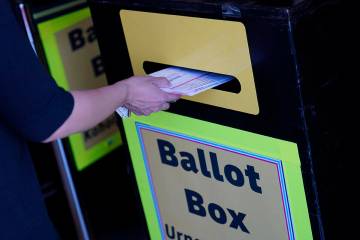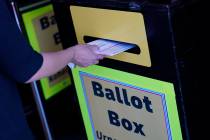VICTOR JOECKS: Signature verification is a joke. Here’s how I beat the system
Signature verification isn’t adequate security for an all-mail election. That’s not a just theory. Here’s how I beat the system.
During Nevada’s all-mail primary, there were numerous reports and photos of ballots piling up in the trash cans of apartment complexes. Jenny Trobiani, a post office employee for more than 35 years, said that thousands of undeliverable ballots were sitting without security in mail crates. The county also sent a ballot to her deceased mother.
Both state and local election officials assured the public that signature verification safeguards prevented someone from successfully voting multiple times. Because signatures are fairly unique, it’s a plausible theory. But it didn’t hold up well under simple testing.
Here’s what I did. I signed my ballot with a capital “V,” capital “J” and straight lines in place of the other letters. Then I had four other people sign their name using print letters instead of a cursive signature. In another case, I wrote the name of one person using my normal cursive handwriting, which looked different than her normal signature. She then signed her ballot copying how I wrote her name instead of using her regular script.
Nothing here was illegal. In each of these examples, the voter signed his or her own ballot — but in a way that didn’t look like their usual signatures. It was a legal way to test whether Nevada’s signature matching system weeded out penmanship that didn’t match what the county had on file.
The stakes were high. What I did was far from sophisticated. If the county didn’t flag these ballots, it would be strong evidence that signature verification is a joke. It would mean that an unscrupulous individual or group could feel confident that the county would count fraudulently signed ballots.
That could be the difference in a close election.
The county’s signature verification process didn’t work. The county flagged only my ballot — the most obvious signature that didn’t match — and one ballot with printed letters. But the other ballots, featuring printed names and signatures that didn’t match those on file, went through. In contrast, the county’s process for “curing” my signature worked well. It required me to submit photo ID proving I was who I claimed to be.
The implications of this are terrifying. It means that the only thing standing between Nevada and election fraud in an all-mail election is the integrity of everyone involved. If someone is willing to commit ballot fraud, signature verification isn’t going to be much of an obstacle. Good thing politics attracts only honest people, right?
That’s a far cry from what election officials told the public. If “the voter’s signature does not match the one on file with the county election official, the voter will be contacted,” a March statement from Secretary of State Barbara Cegavske’s office said. The voter will have to “make the necessary correction.”
If only.
Let’s be clear about what this experiment does and doesn’t show. If individuals request a mail ballot, they should expect their vote will count. It’s not proof there is widespread fraud in the system, either. After all, everything here was legal. But it does show fraud is possible — and that’s concerning enough.
The burden of proof is on election officials to design and implement a secure voting system, not on those who point out potential weaknesses.
Unfortunately, this experiment shows the main safeguard election officials claim will keep someone from voting multiple times in an all-mail election is mostly an illusion.
An earlier version misstated how many printed signatures the county accepted.
Victor Joecks’ column appears in the Opinion section each Sunday, Wednesday and Friday. Contact him at vjoecks@reviewjournal.com or 702-383-4698. Follow @victorjoecks on Twitter.





























